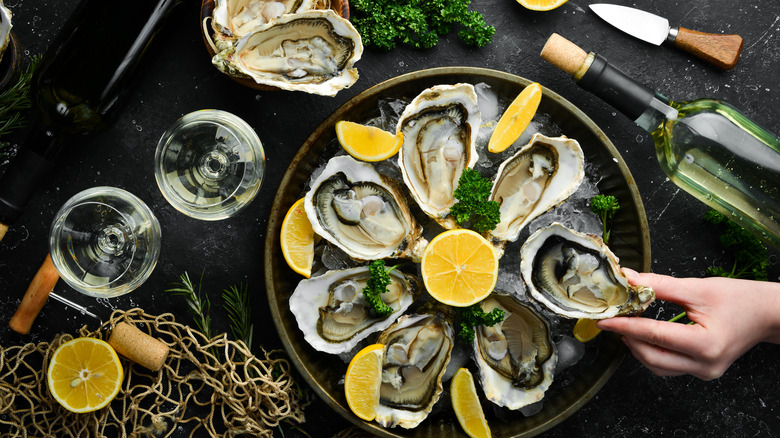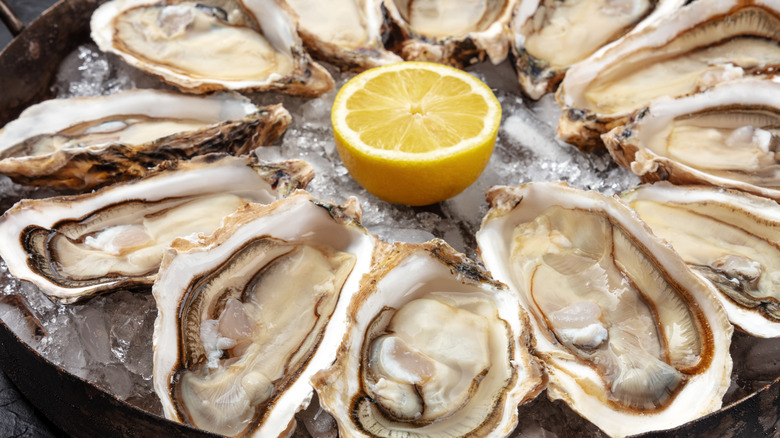Is It Safe To Eat Raw Oysters During The Hot Summer Months?
Few foods encapsulate the ideation of "the good life" like a raw oyster on a half shell. As National Book Award-winner Eleanor Clark put it in her opus (about oysters), "Obviously, if you don't love life, you can't enjoy an oyster." Indeed, the luxurious, snotty bivalve boasts such A-list fans as Ernest Hemmingway, Jimmy Buffet, and Anthony Bourdain, who famously revered eating his first raw oyster as the moment that turned him onto food forever.
Still, the oyster also attracts at least as many skeptics. As with any uncooked food, like sushi or raw milk cheese, there is some element of risk when enjoying a raw oyster. But, does that risk become even greater during the hot summer months?
The "danger" aspect of indulging in a raw oyster is called Vibrio vulnificus, a type of bacteria that likes to hang out in bivalves and other shellfish. Oysters are filter-feeders, and as a result, if the Vibrio bacteria happens to float through any of the water that the oyster filters, it can be stored in the animal's tissue.
Perhaps most unsettlingly, the bacteria cannot be smelled, tasted, observed, or otherwise detected. Hot sauce, lemon juice, and alcohol may be delicious on your half-shell, but they will do no good to kill any germs or keep you safe. By all means, get crazy with the mignonette — but is it safe to eat raw oysters in the summertime in the first place?
Trust the professionals and use a little caution
According to the FDA, there's a circulating myth that if you avoid eating raw oysters during "months without the letter 'R,'" you'll be safe. That would mean no oysters from May to August, and indeed, the majority of U.S. vibriosis cases occur between May and October, reports the CDC. But, this statistic might be the product of a confounding variable.
When summertime rolls around, New Yorkers are chittering away about "dollar oyster happy hour" from The Flower Shop in the Lower East Side to Mominette in Bushwick. Americans in cold-weather states are likely to go out for wine and oysters a lot more often during the dog days of summer than during a snowstorm.
Aquaculturalist Donald Merit says a raw oyster is a raw oyster year-round, and if a bad oyster was going to get you in July, it also would've gotten you in January. "Essentially if you buy oysters that are grown in healthy waters and they're handled properly, then there's no problem with eating them any time of the year," explains Merit (via The New York Times).
According to the CDC, many restaurants specially treat their raw oysters to kill any lurking Vibrio bacteria. From Puget Sound to Arcachon, France, oyster harvesting is a trade that happens year-round, and (assuming the normal margin of error) the professionals know what they're doing. If you're shucking at home, just be sure to thoroughly wash the outside of each shell before opening it.

